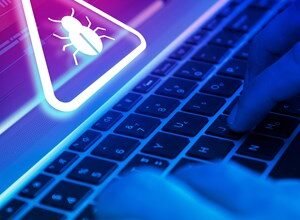Top 6 Cyber Security Trends Every CISO Must Know in 2025

▼ Summary
– Attackers are increasingly using phone calls, often impersonating IT departments, to conduct social engineering attacks, exploiting deepfake technology to sound authentic.
– Credential compromise remains the top method for attackers to infiltrate organizations, with 56% of Q1 2025 breaches due to stolen credentials lacking multi-factor authentication (MFA).
– SMS-based two-factor authentication (2FA) is vulnerable to SIM-swapping attacks, pushing organizations toward more secure MFA methods like FIDO protocols (biometrics or security keys).
– Cybersecurity measures must balance security and usability to reduce employee friction, ensuring compliance without hindering productivity.
– Passwordless authentication methods, such as biometrics and single sign-on, are emerging as user-friendly solutions to enhance security while minimizing workflow disruptions.
The cybersecurity landscape is rapidly evolving, with new threats emerging alongside technological advancements. Industry leaders recently gathered at Infosecurity Europe 2025 to discuss critical trends shaping digital defense strategies. While innovation remains crucial, experts emphasized the ongoing importance of foundational security practices—particularly human behavior and identity management.
Phone-based social engineering attacks are surging, with cybercriminals increasingly using calls—often combined with emails—to trick employees into revealing credentials. Erhan Temurkan, Technology & Security Director at Fleet Mortgages, highlighted a concerning rise in scams impersonating IT departments. Attackers exploit deepfake technology to mimic familiar voices, making these schemes harder to detect than traditional phishing emails. Unlike email filters, blocking malicious calls is challenging since organizations can’t risk disrupting legitimate communication. Temurkan stressed the need for additional authentication layers, such as pre-agreed passphrases, to counter these threats.
Identity theft remains the top attack vector, accounting for over half of all breaches in early 2025, according to Rapid7. Thom Langford, the company’s EMEA CTO, noted that attackers still rely on basic tactics like stealing unprotected credentials. Cloud environments are especially vulnerable, as compromised SaaS accounts can escalate into full-scale data breaches. Dr. Beverly McCann of Darktrace warned that attackers often target admin privileges once they gain initial access. While multi-factor authentication (MFA) is essential, not all methods are equally secure. Temurkan pointed to SIM-swapping attacks as a growing risk, where hackers intercept SMS-based 2FA codes. He advocated for phishing-resistant MFA solutions, such as FIDO-compliant biometrics or hardware keys, which offer stronger protection.
Balancing security with usability is critical for long-term success. Langford observed that overly restrictive measures often frustrate employees, leading to poor compliance. The key lies in reducing friction—for example, adopting passwordless authentication like single sign-on or biometrics. Temurkan echoed this, urging the industry to prioritize seamless yet secure solutions. As threats grow more sophisticated, organizations must stay ahead by combining robust defenses with employee-friendly practices.
(Source: INFOSECURITY MAGAZINE)





